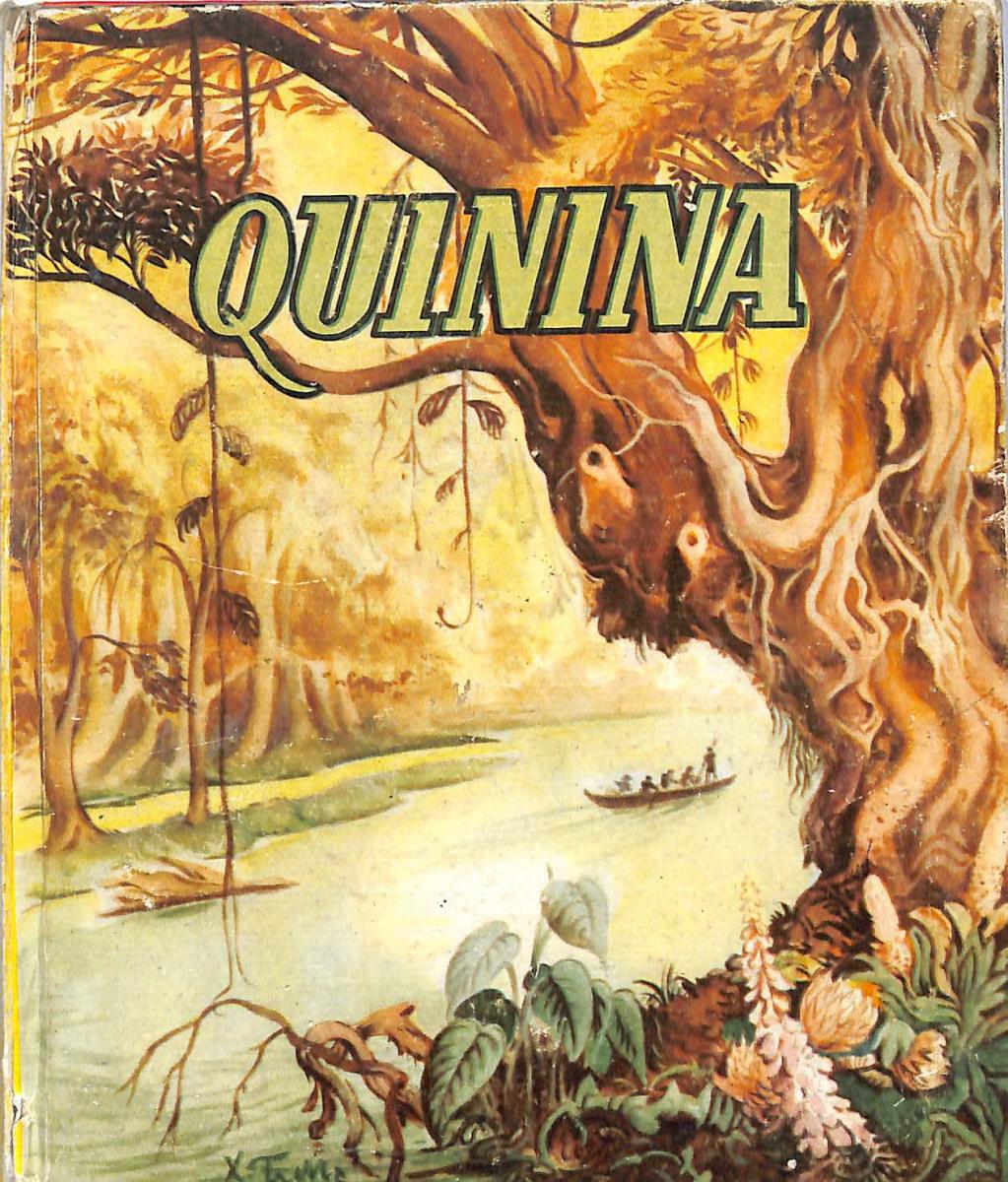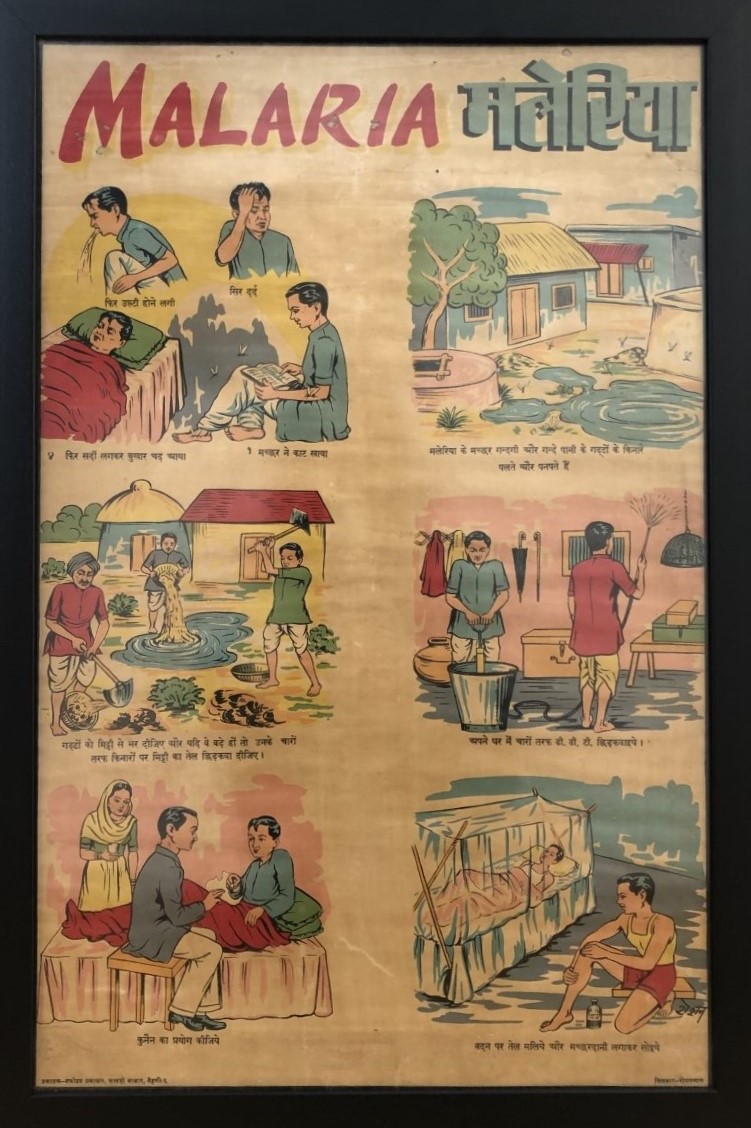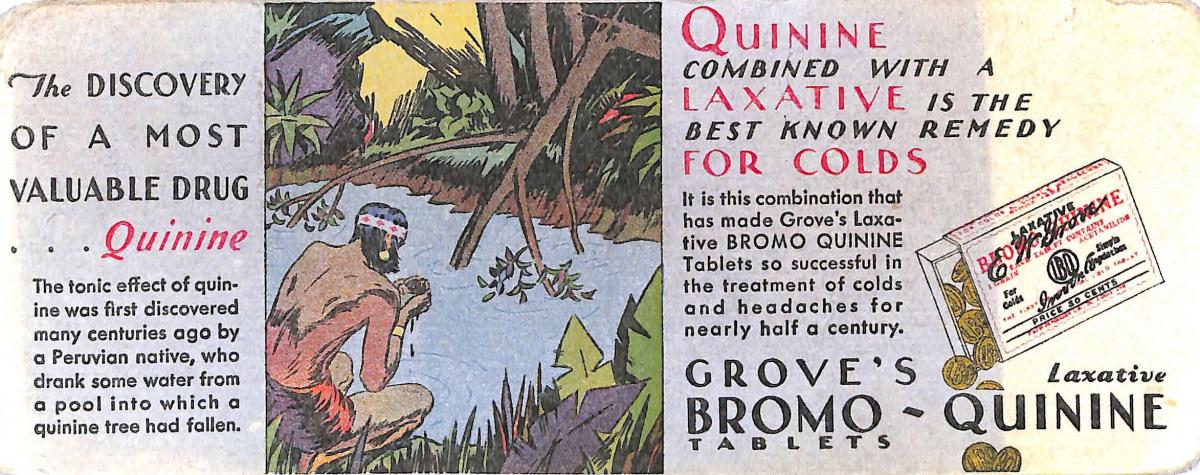 Grove's. Grove's laxative bromo-quinine tablets. Regne Unit.
Grove's. Grove's laxative bromo-quinine tablets. Regne Unit.
Advertising brochure for Grove antimalarial treatment that explains the legendary origins of quinine.
Children's book that explains the origins of quinine. It is part of the collection: Aurea infantil: cómo, cúando y porqué (respuestas sencillas a preguntas difíciles).
Although the case of the Countess of Chinchón belongs to the legend, in 1742 the Swedish botanist Carl Linnaeus, in homage to her, assigned the name cinchona (or chinchona) to the genus of the quinine tree.
 Guérin-Boutron. Chocolat Guérin-Boutron. França.
Guérin-Boutron. Chocolat Guérin-Boutron. França.
Advertising for a box of Guérin-Boutron chocolates with commemorative information on the discovery of quinine. Quinine was first isolated in 1820 by French pharmacists Pierre Pelletier and Joseph Caventou from quinine bark.
 Grove's. Grove's Tasteless Chill Tonic. Regne Unit.
Grove's. Grove's Tasteless Chill Tonic. Regne Unit.
 Cayetano del Pino y Cª. Monja-quina. Vino aperitivo y reconstituyente. Espanya: Lit. Hurtado.
Cayetano del Pino y Cª. Monja-quina. Vino aperitivo y reconstituyente. Espanya: Lit. Hurtado.
The tradition of dissolving quinine in wine led to the making of this type of drink, which lived its heyday in the late nineteenth century, and which were advertised as tonics for the whole family. One of the most popular was Grove’s Chill Tonic, used by the British Army as a preventive treatment for malaria in tropical areas. Grove’s Chill Tonic was also a bestseller product in the households of England, where també un producte supervendes a les llars del Regne Unit, where he boasted of turning both children and adults fat like pigs. In Spain existed Monja-quina, another example of this kind of products.
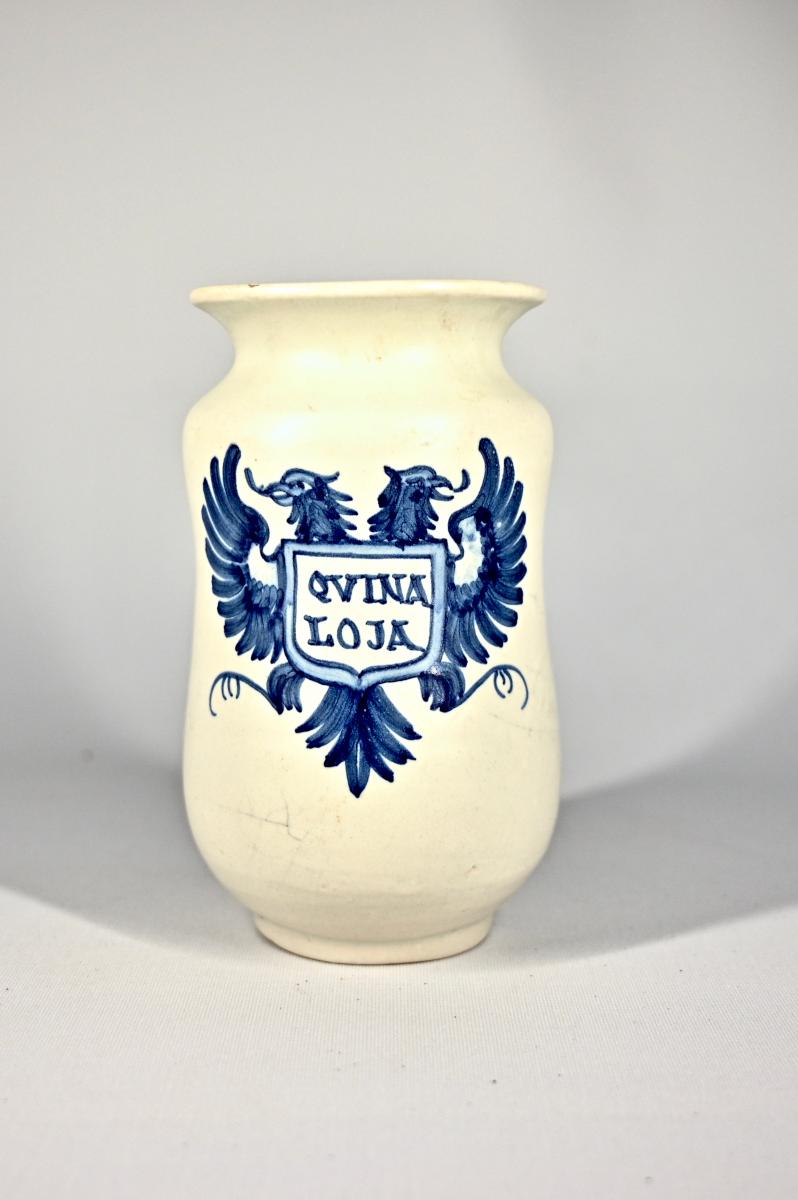 Ceramic container for storing quinine powder.
Ceramic container for storing quinine powder.
The treatment of malaria with quinine has been documented for over 400 years. As early as the 17th century, it was common among missionaries to South America to treat the disease with the dust they obtained by crushing the bark of the quina tree.
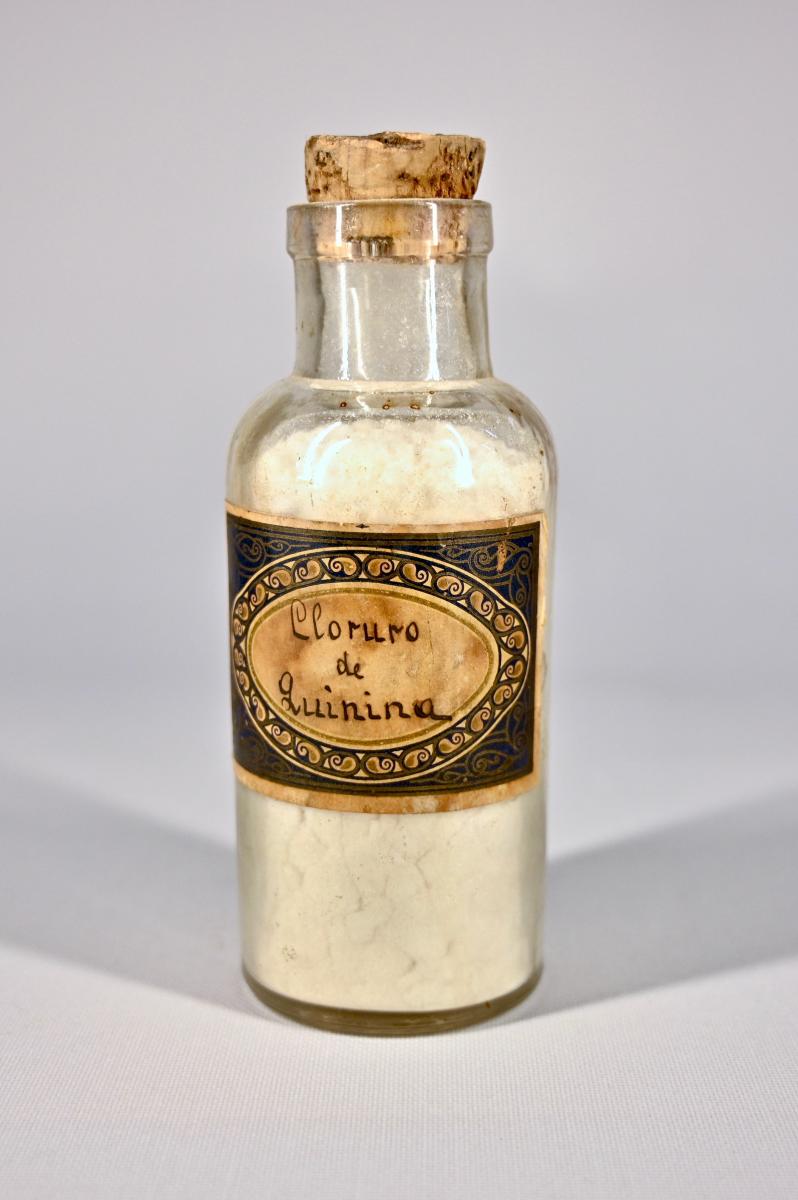 Preparation of quinine chloride. S.XIX.
Preparation of quinine chloride. S.XIX.
In the second half of the 19th century, master formulations or sui generis of quinine and its derivatives proliferated.
 Information leaflet on the transmission of malaria and its life cycle. Amsterdam: Cinchona instituut.
Information leaflet on the transmission of malaria and its life cycle. Amsterdam: Cinchona instituut.
 Amsterdamsche Chininefabriek. Sulfate de quinine. Amsterdam: fabrique de quinine. Codex français, 1884.
Amsterdamsche Chininefabriek. Sulfate de quinine. Amsterdam: fabrique de quinine. Codex français, 1884.
Quinine seed plantations in Indonesia left behind any competitors and established a genuine Dutch quinine trade monopoly.
 Original photograph of a worker on Dutch plantations in Indonesia harvesting the bark of the quina tree.
Original photograph of a worker on Dutch plantations in Indonesia harvesting the bark of the quina tree.
 Montgomery Ward & Co. Quinine Sulphate. Montgomery Ward & Co, finals del S.XIX.
Montgomery Ward & Co. Quinine Sulphate. Montgomery Ward & Co, finals del S.XIX.
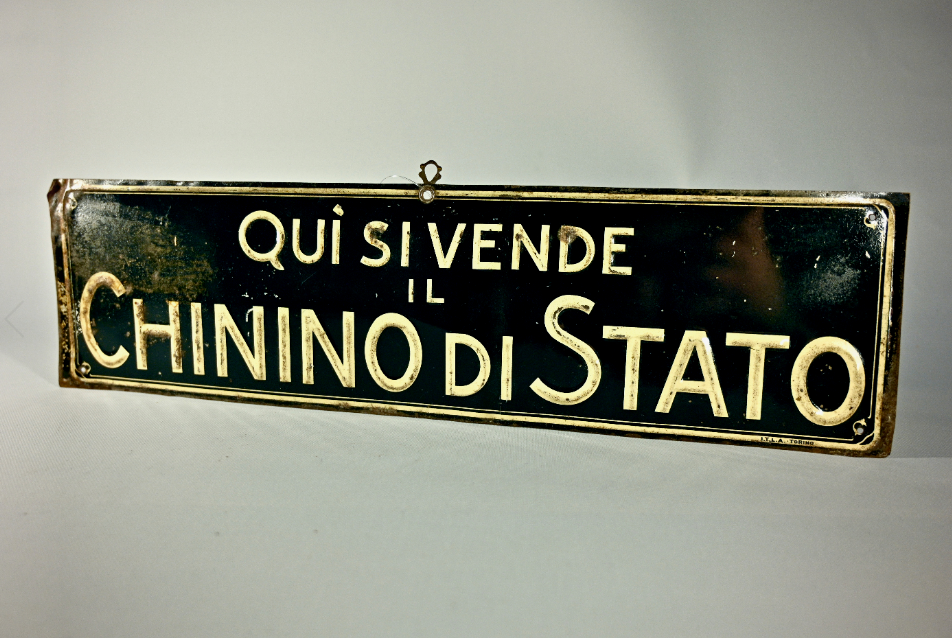 Qui si vende chinino di Stato.
Qui si vende chinino di Stato.
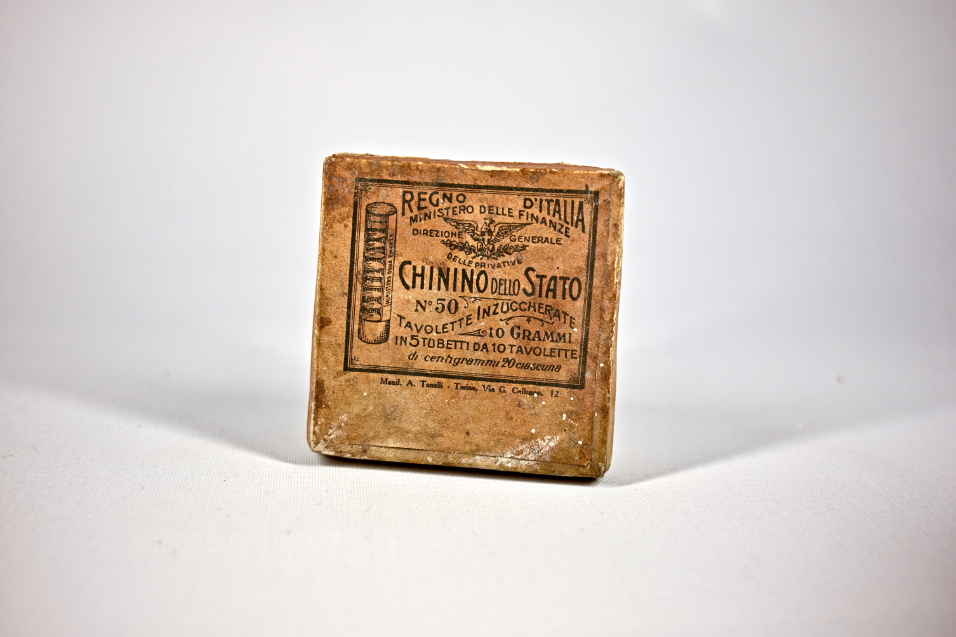 Chinino dello Stato. Tavolette Inzuccherate. Itàlia: Regno d'Italia, Ministerio delle Finanze, 1925.
Chinino dello Stato. Tavolette Inzuccherate. Itàlia: Regno d'Italia, Ministerio delle Finanze, 1925.
 Cioccolatini di tannato di chinina. Itàlia: Regno d'italia.
Cioccolatini di tannato di chinina. Itàlia: Regno d'italia.
The elimination of malaria in Italy was possible thanks to quinine. For several turbulent decades, the Italian state shifted from a monarchy to a fascist regime and eventually to a republic. Successive governments, however, had something in common: the commitment to the production of quinine through a state monopoly that controlled the price of the product. Measures taken include stagnant water drainage, the distribution of quinine in tobacconists and even the production of chocolate bars in quinine.
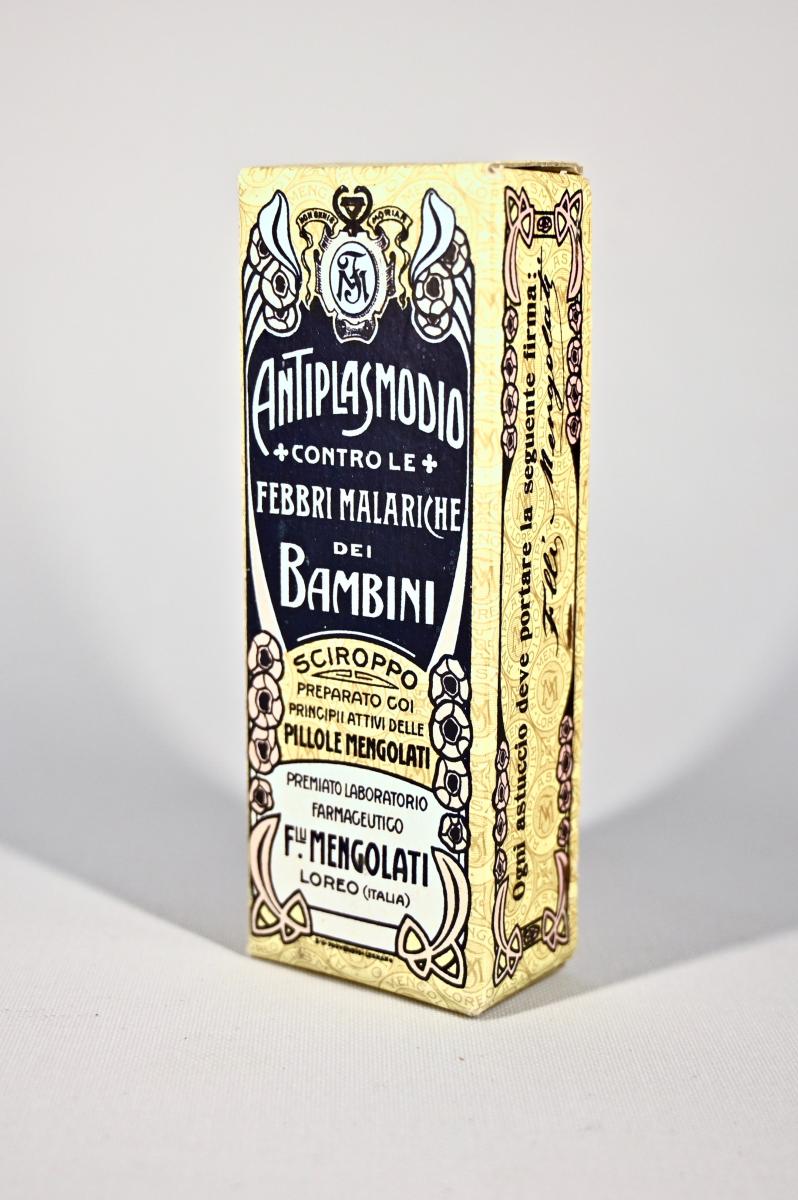 Mengolati, F. Antiplasmodio contro le febri malariche dei bambini. Ciroppo. Loreo: Mengolati, F.
Mengolati, F. Antiplasmodio contro le febri malariche dei bambini. Ciroppo. Loreo: Mengolati, F.
 Laboratorio Felice Bisleri. Esanofele. Remedio contra las fiebres palúdicas. Milà: Laboratorio Felice Bisleri.
Laboratorio Felice Bisleri. Esanofele. Remedio contra las fiebres palúdicas. Milà: Laboratorio Felice Bisleri.
 Pharmaceutical container for the storage of quinine ethyl carbonate (euquinine).
Pharmaceutical container for the storage of quinine ethyl carbonate (euquinine).
Quinine ethylcarbonate (euquinine) was supposed to have fewer side effects than quinine - like quinonism - and was therefore more suitable for children.
 Mason & Pollards. Anhilation ot the enemies of mankind by Mason & Pollards antimalaria pills. EUA: Mason & Pollards, 1890.
Mason & Pollards. Anhilation ot the enemies of mankind by Mason & Pollards antimalaria pills. EUA: Mason & Pollards, 1890.
Advertising poster for Mason & Pollards' antimalarial pills.
 Monticello Drug Company. 666 Malaria Preparation. The original 666 quinine formula. Jacksonville: Monticello Drug Company, 1930.
Monticello Drug Company. 666 Malaria Preparation. The original 666 quinine formula. Jacksonville: Monticello Drug Company, 1930.
 40 Cachets a 0.25gr Chlorhydrate de Quinine. París: Pelletier, Delondre e Levaillant.
40 Cachets a 0.25gr Chlorhydrate de Quinine. París: Pelletier, Delondre e Levaillant.
Container of quinine hydrochloride from the brand Pelletier, Delondre et Levaillant.
 Marchiafava, E. La Perniciosità nella malària. Roma: Casa Editrice Luigi Pozzi, 1928.
Marchiafava, E. La Perniciosità nella malària. Roma: Casa Editrice Luigi Pozzi, 1928.
Ettore Marchiafava (January 3, 1847 - October 22, 1935) was an Italian physician, pathologist and neurologist. He spent most of his career as a professor of medicine at the University of Rome. His work on malaria laid the foundations of modern malariology.
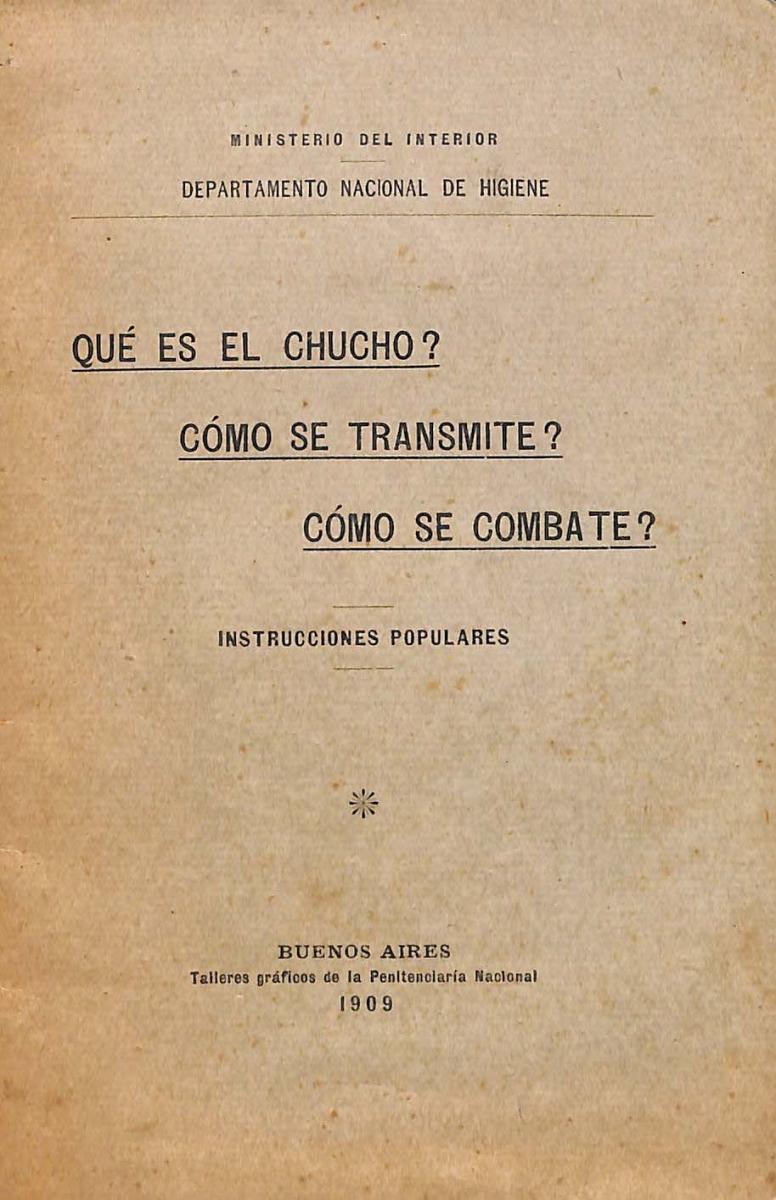 Ministerio del interior. Departamento nacional de higiene. Qué es el chucho? Cómo se transmite? Cómo se combate? Instrucciones populares. Buenos Aires: Talleres gráficos de la Penitenciaria Nacional, 1909.
Ministerio del interior. Departamento nacional de higiene. Qué es el chucho? Cómo se transmite? Cómo se combate? Instrucciones populares. Buenos Aires: Talleres gráficos de la Penitenciaria Nacional, 1909.
“The disease known in the Republic with the name of chucho, is the same as in other countries and ours, is called malaria, malaria, intermittent fever, malaria fever, etc."
 Macdonald, G. The epidemiology and control of malària. London: Oxford University Press, 1957.
Macdonald, G. The epidemiology and control of malària. London: Oxford University Press, 1957.
Ronald Ross and George Macdonald are credited for developing a mathematical model of the transmission of pathogens by mosquitoes.
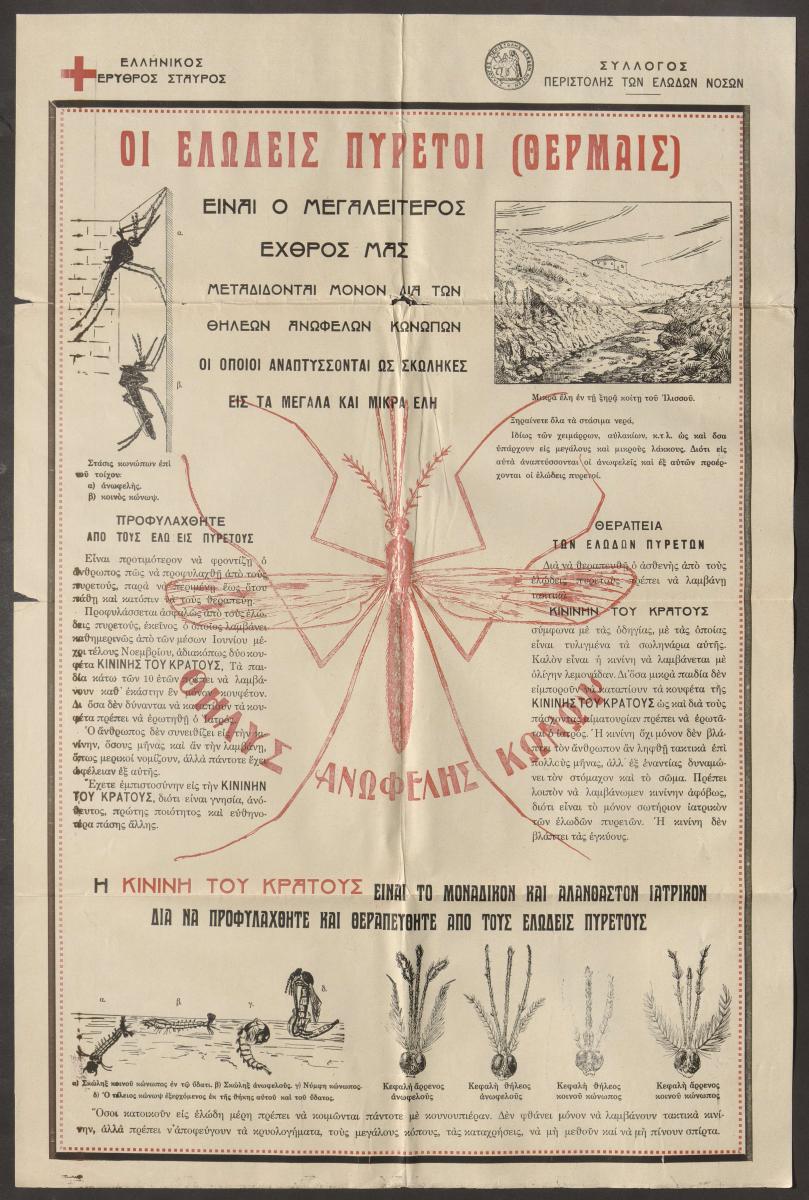 Informative poster on malaria and the anopheles mosquito, published in Greece.
Informative poster on malaria and the anopheles mosquito, published in Greece.
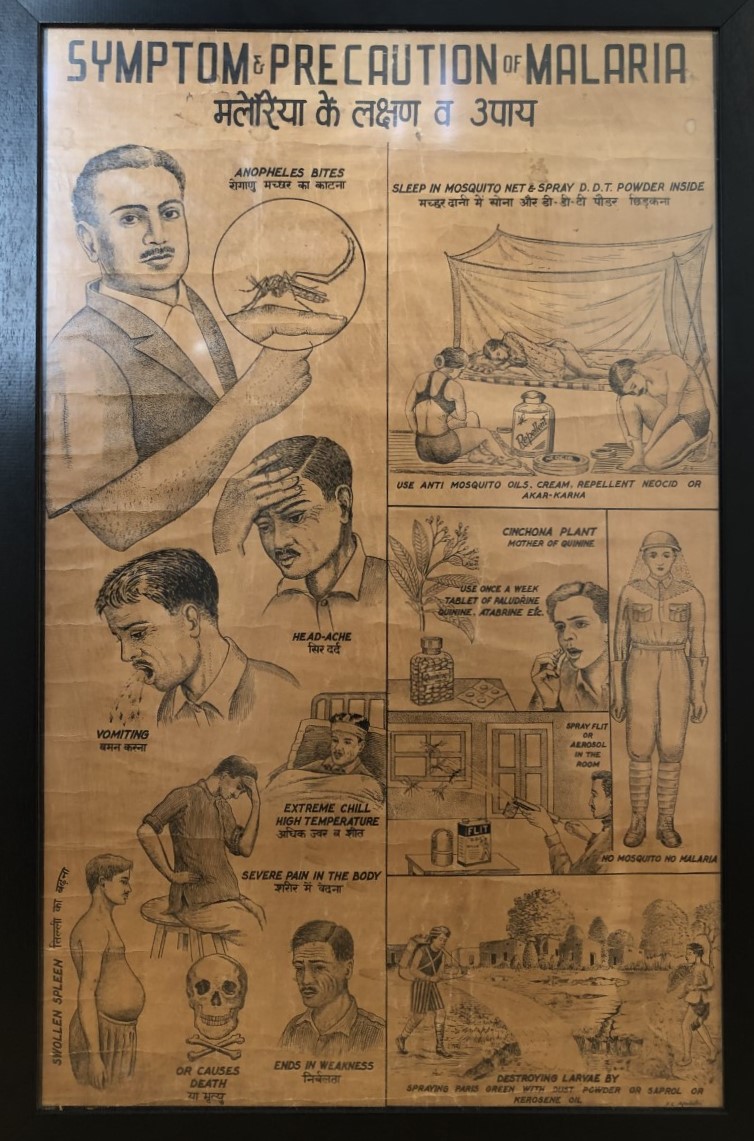 Symptom precaution of Malaria. India.
Symptom precaution of Malaria. India.
Informative poster of the symptoms on malaria with indications on how to prevent and treat it. Employed in India.
Informative poster of the symptoms of malaria with indications on how to prevent and treat it. Employed in India on unknown date.
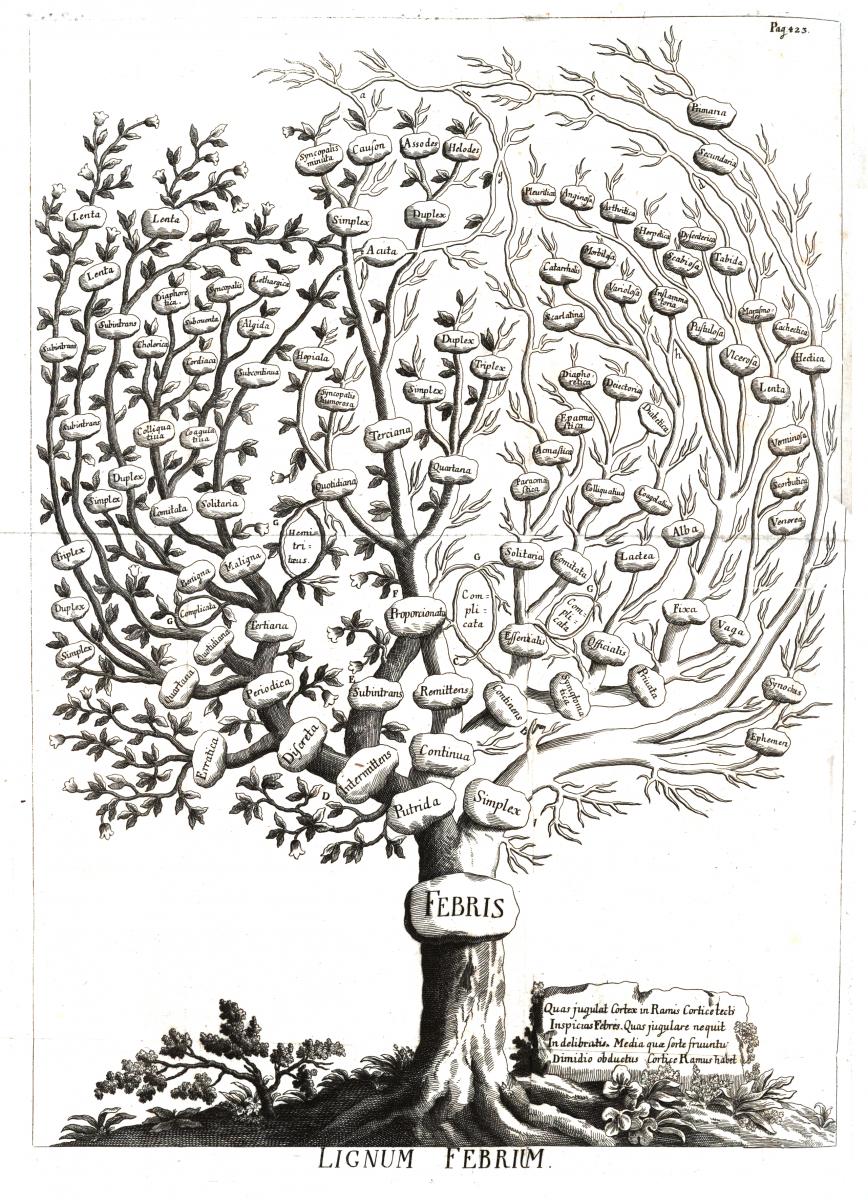 Torti, F. Lignum Febrium dins de F. Torti. Therapeutice specialis ad febres periodicas perniciosas. Modena: 1712.
Torti, F. Lignum Febrium dins de F. Torti. Therapeutice specialis ad febres periodicas perniciosas. Modena: 1712.
The Italian physician Francesco Torti (November 30, 1658 - February 15, 1741) wrote in 1712 that only intermittent fever is susceptible to the bark of the fever tree.
 Life cycle of the plasmodium vivax.
Life cycle of the plasmodium vivax.
Informative poster on the life cycle of the plasmodium vivax.
